Nvidia GeForce GTX 980 Ti 6GB Review
Metro: Last Light, Middle-Earth And The Witcher 3
Metro: Last Light
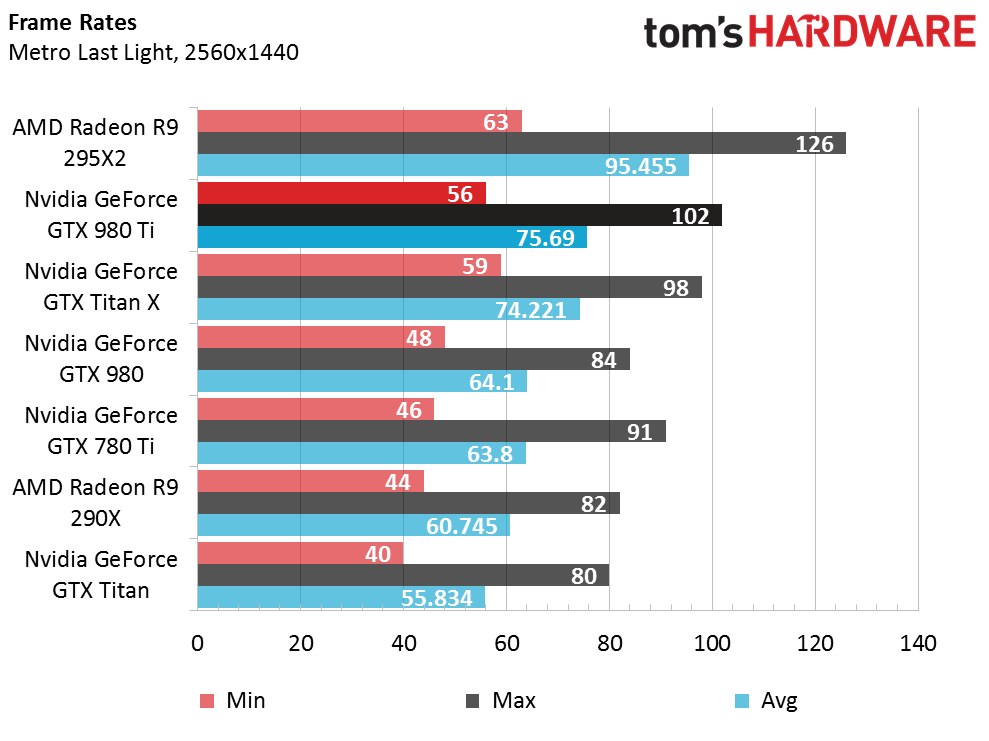
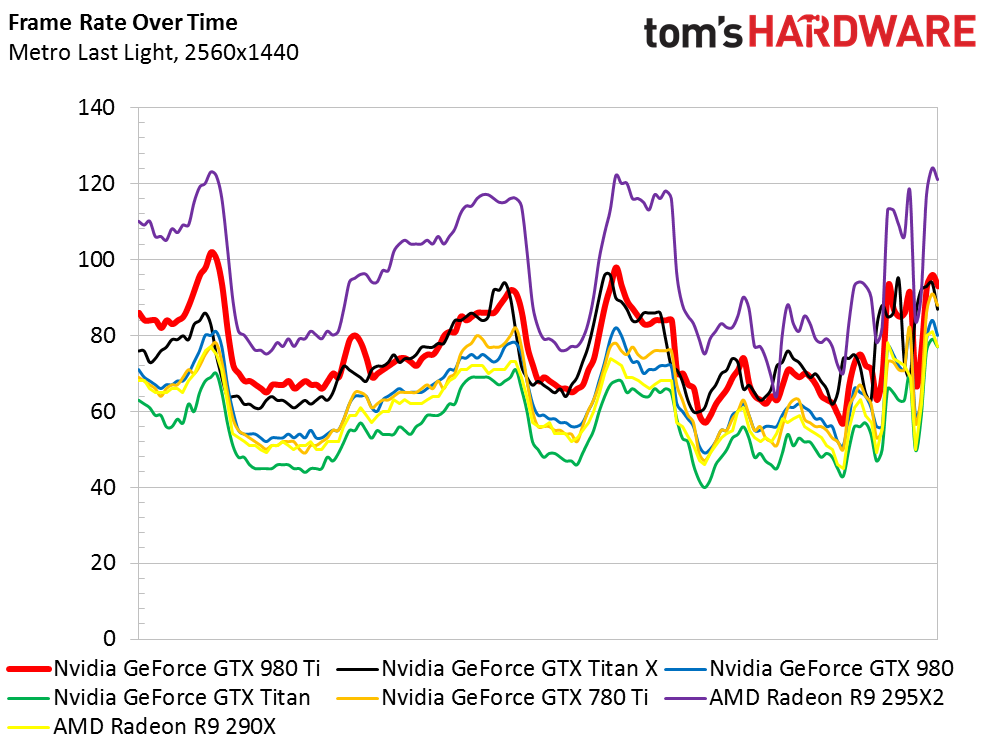
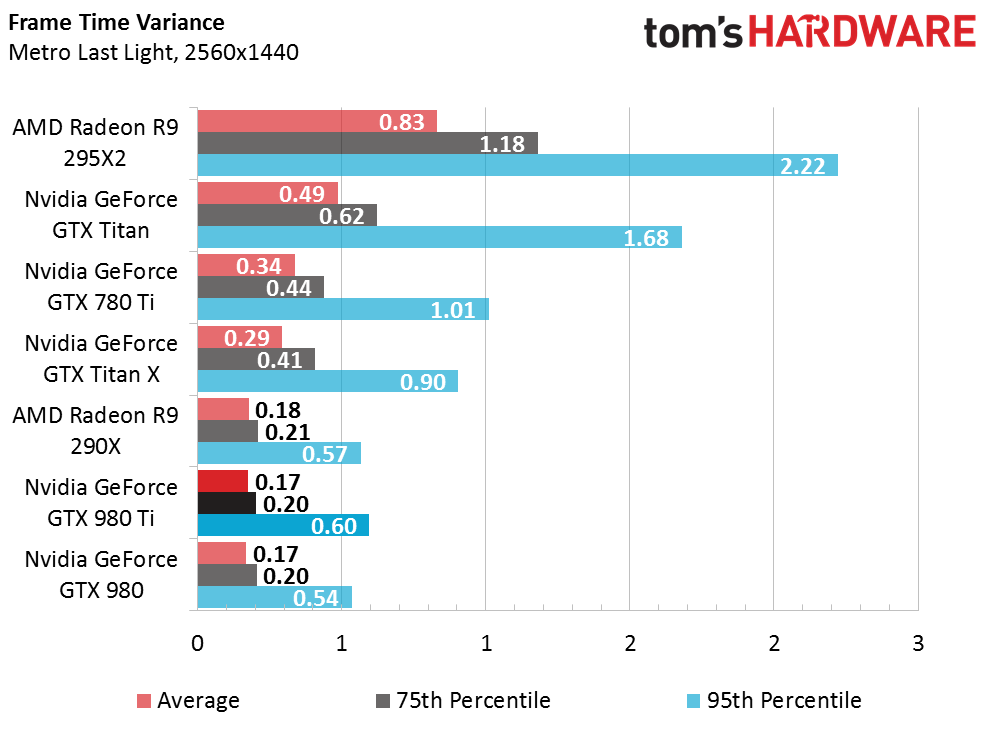
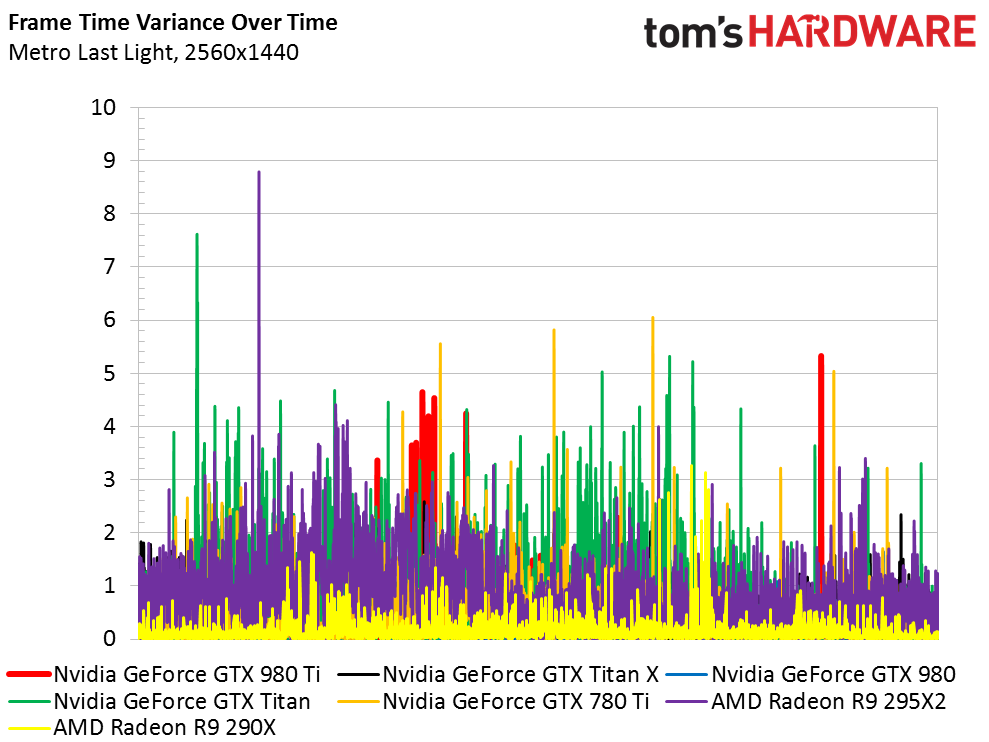
Our fourth benchmark, Metro essentially confirms what we’ve seen three times already: GeForce GTX 980 Ti hugs the Titan X at both 2560x1440 and 3840x2160.
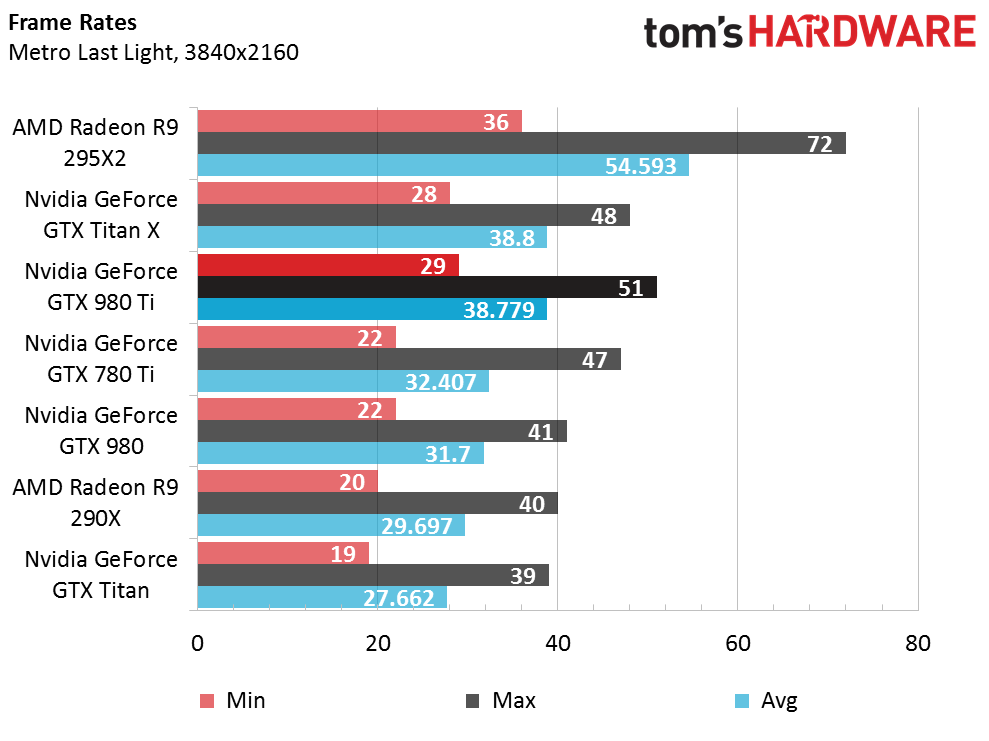
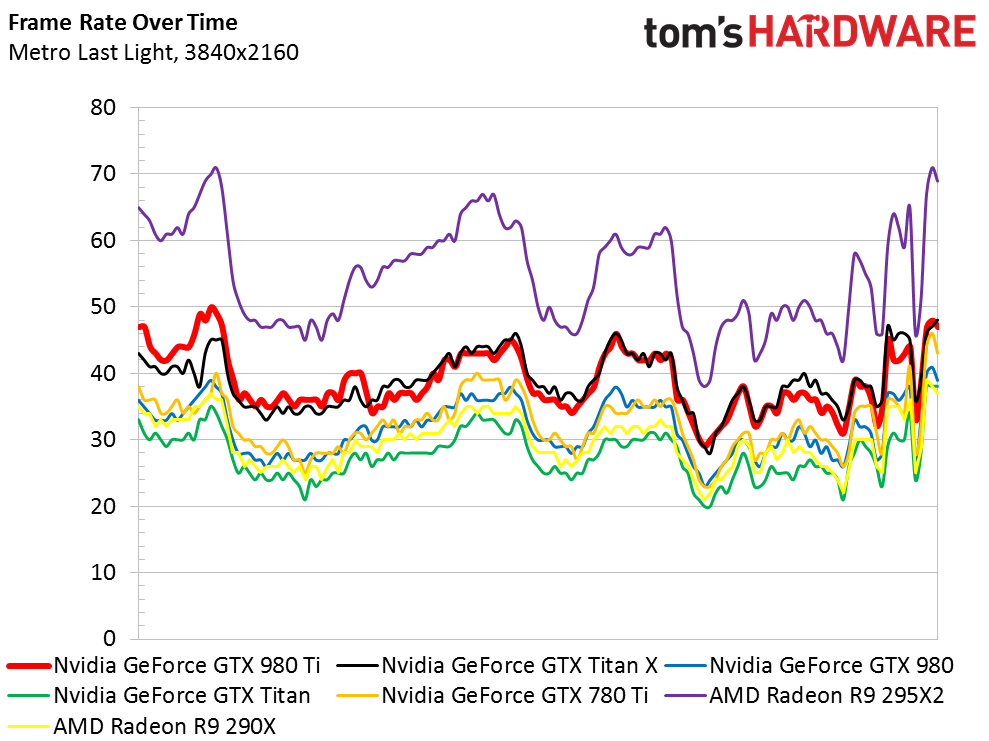
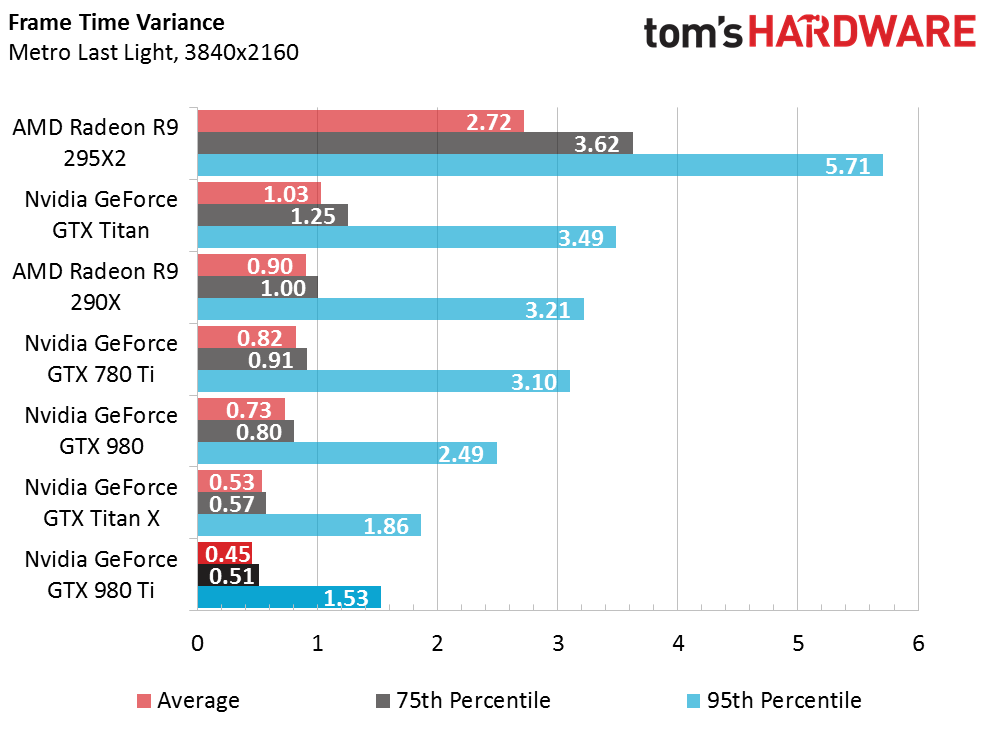
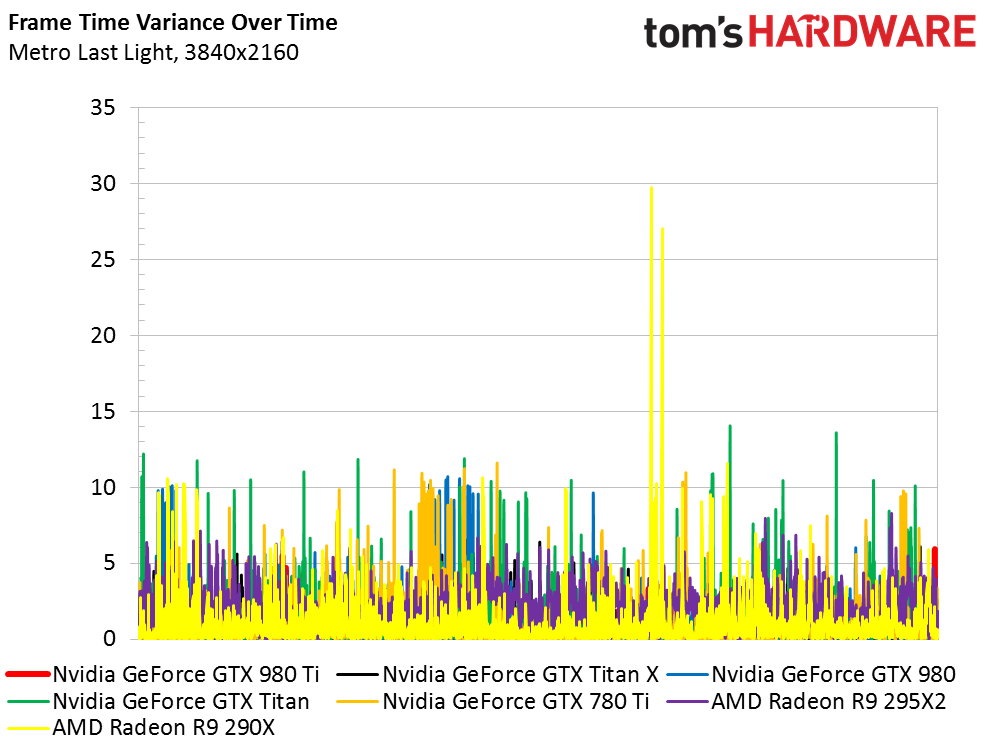
Radeon R9 295X2 delivers notably more performance at both resolutions. What you pay in exchange is much higher power consumption/heat and greater frame time variance, even with frame pacing enabled.
Middle-earth: Shadow of Mordor
Interestingly enough, although AMD’s Radeon R9 295X2 achieves much higher average frame rates at both resolutions, its sporadic behavior results in lower minimums. Our frame rate over time charts illustrate the card’s issues pretty clearly.
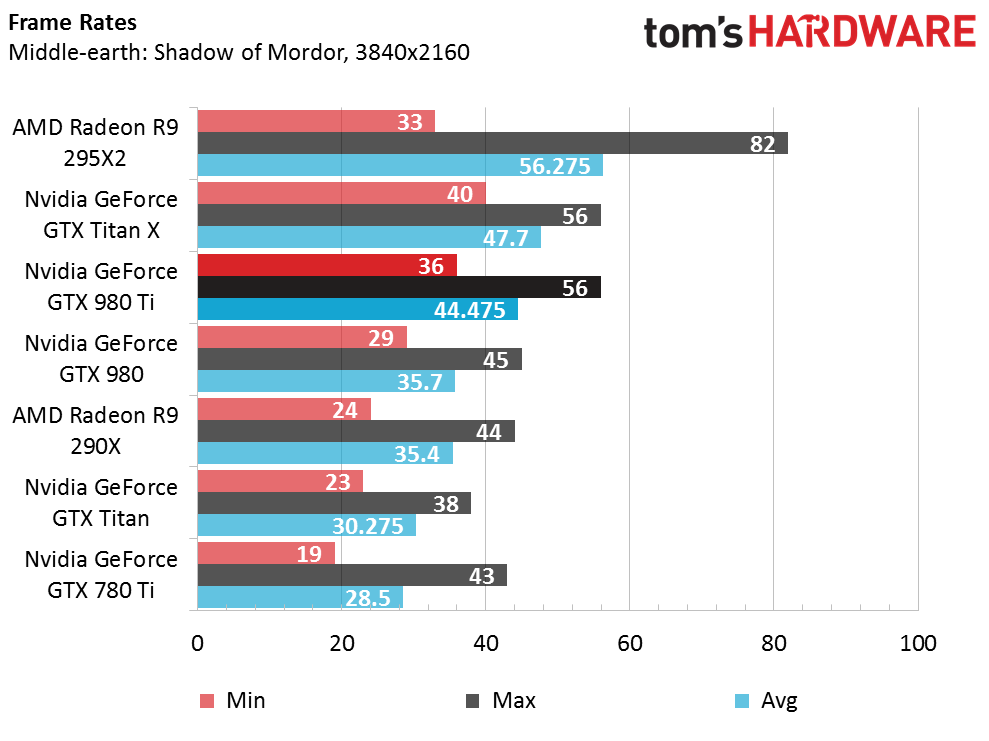
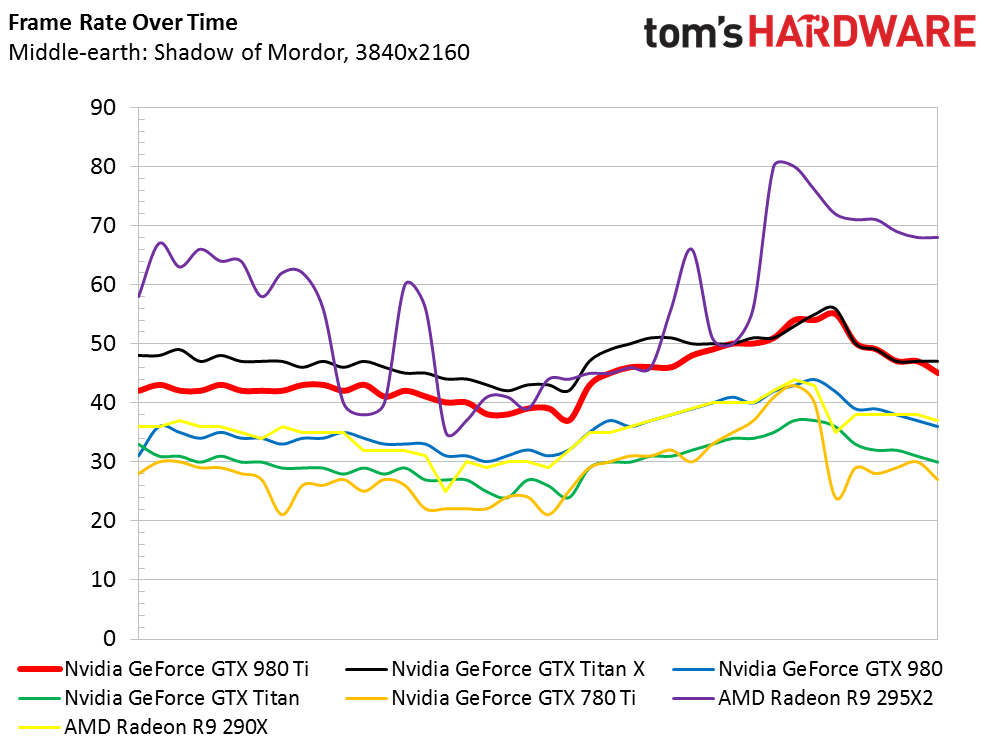
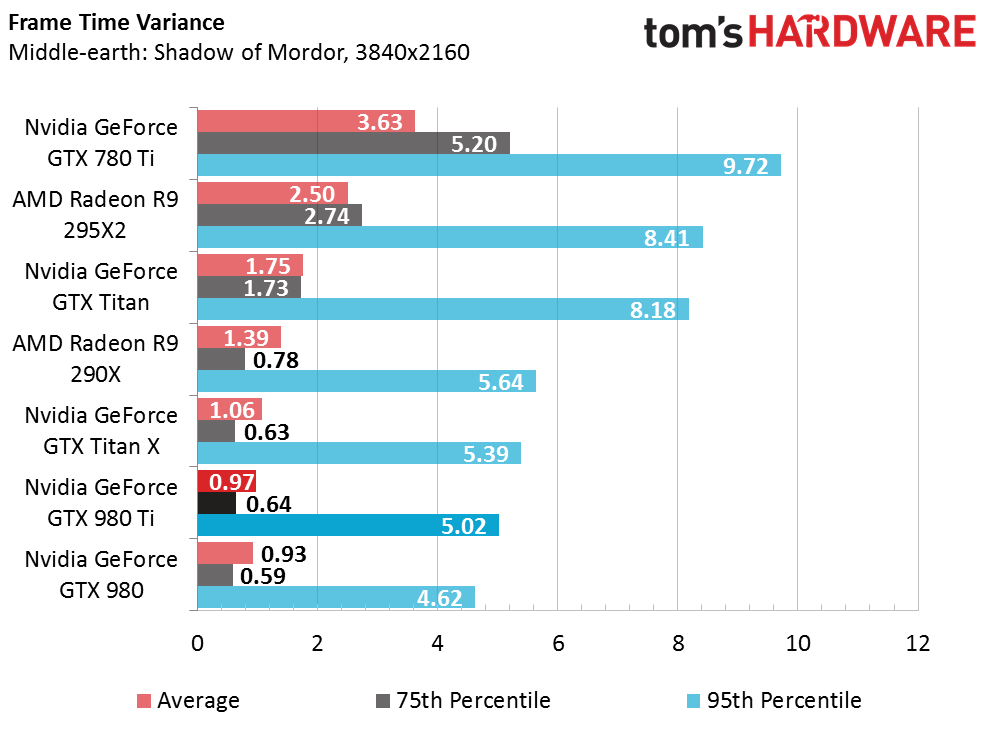
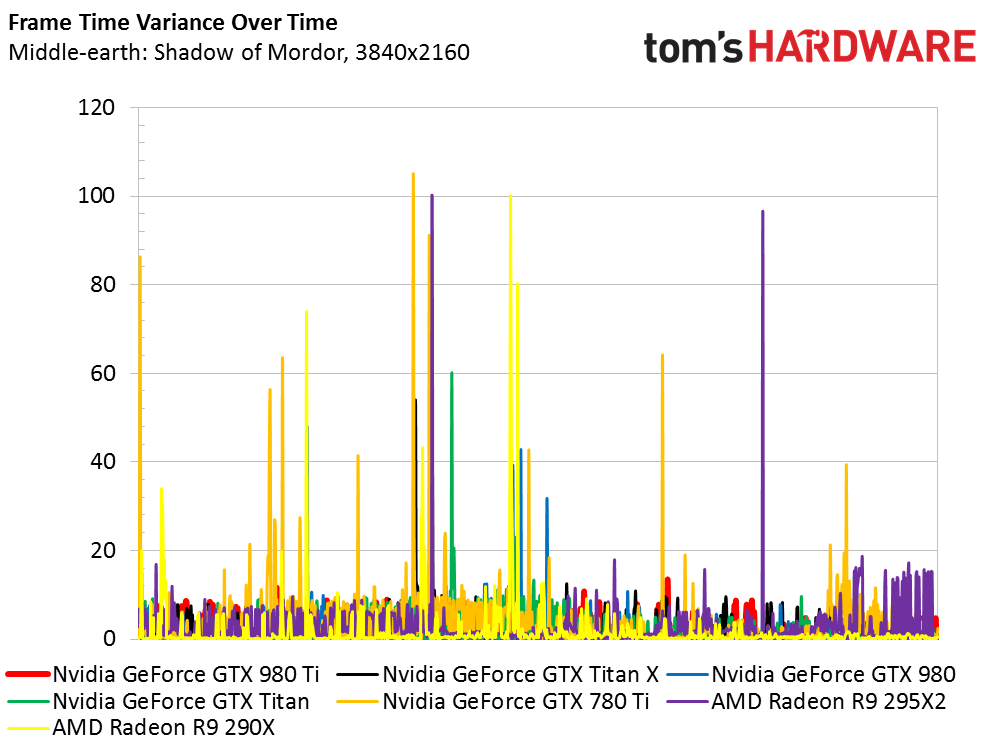
Although the GeForce GTX 980 Ti trails Titan X by the largest separation we’ve seen yet, it still averages more than 44 FPS in Middle-earth at 3840x2160.
The Witcher 3: Wild Hunt
The Witcher 3 is a hot topic right now, both for its great visuals and controversial implementation of Nvidia’s HairWorks technology (incidentally, we leave that feature disabled for our tests).
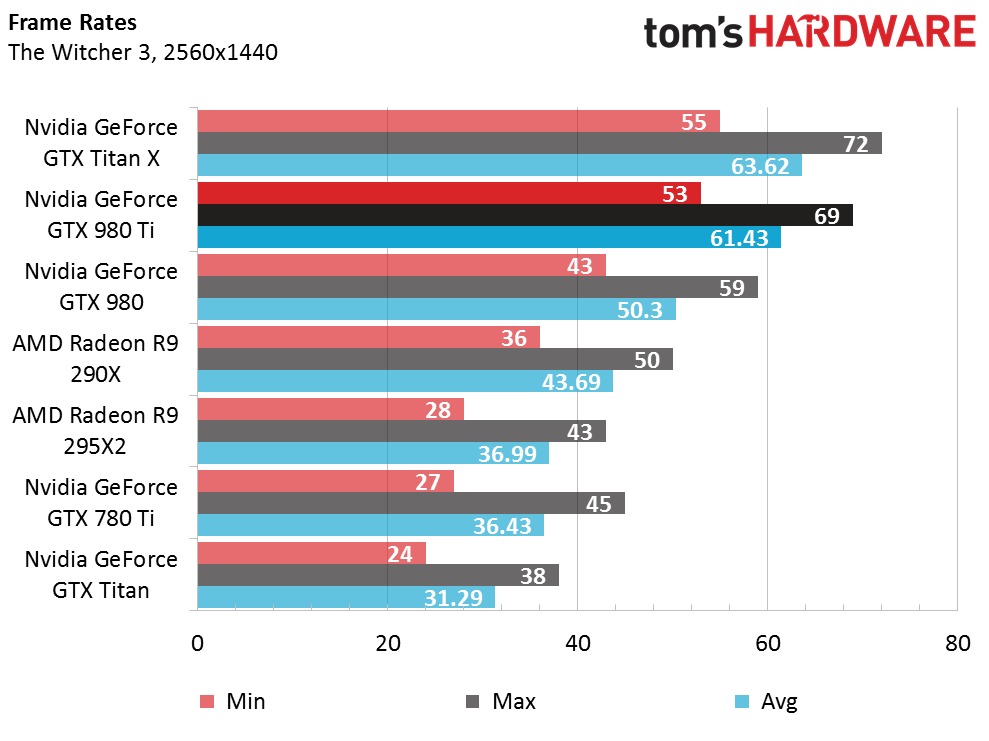
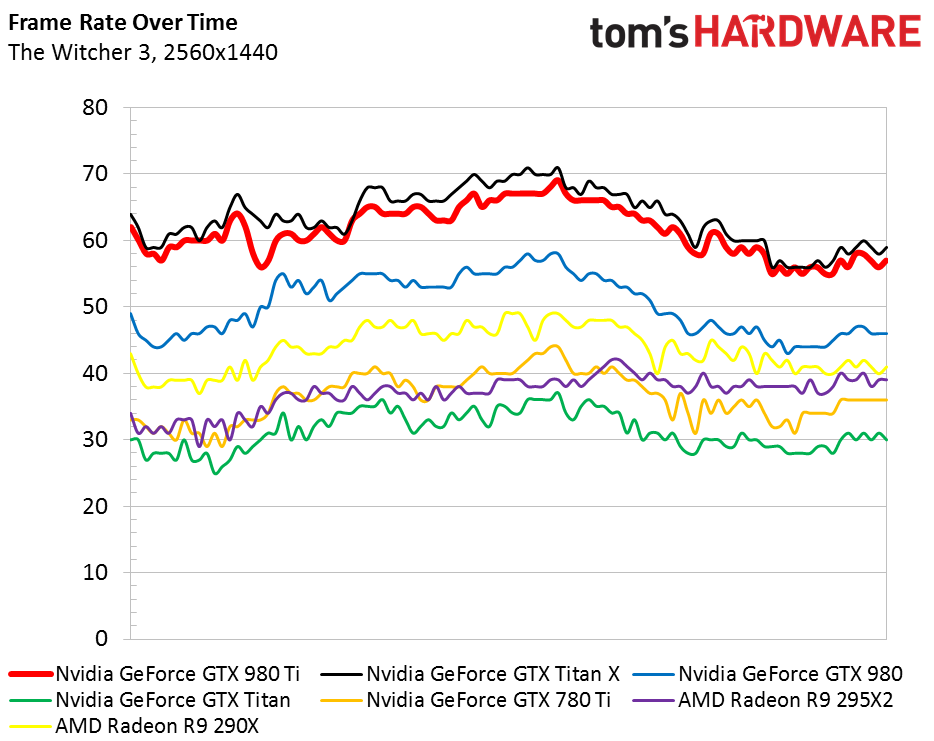
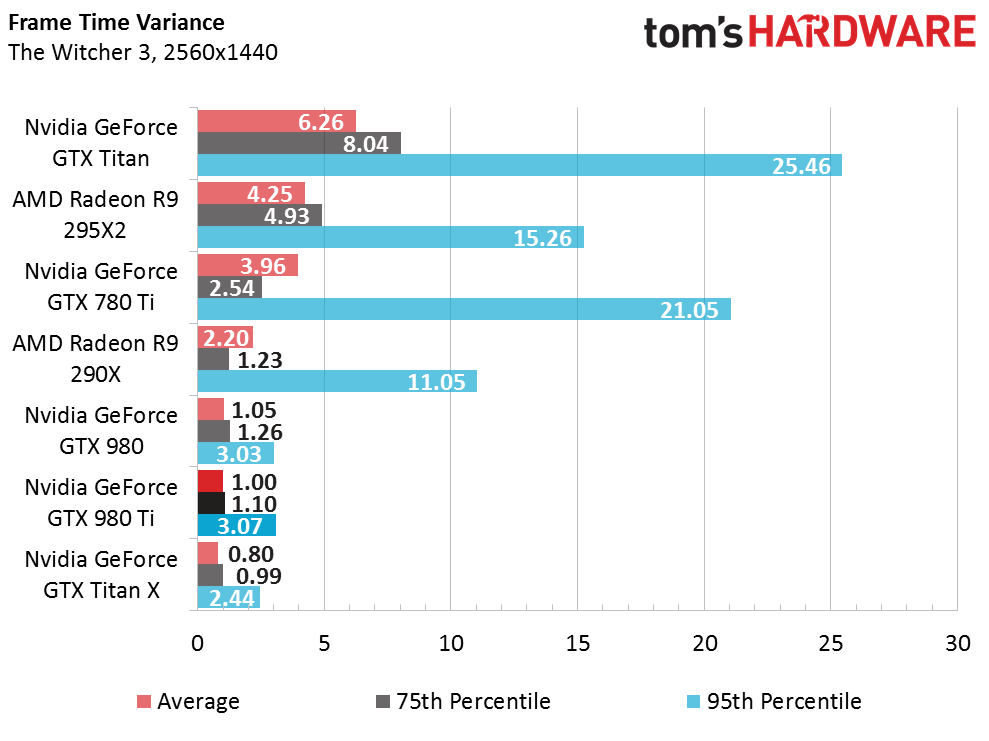
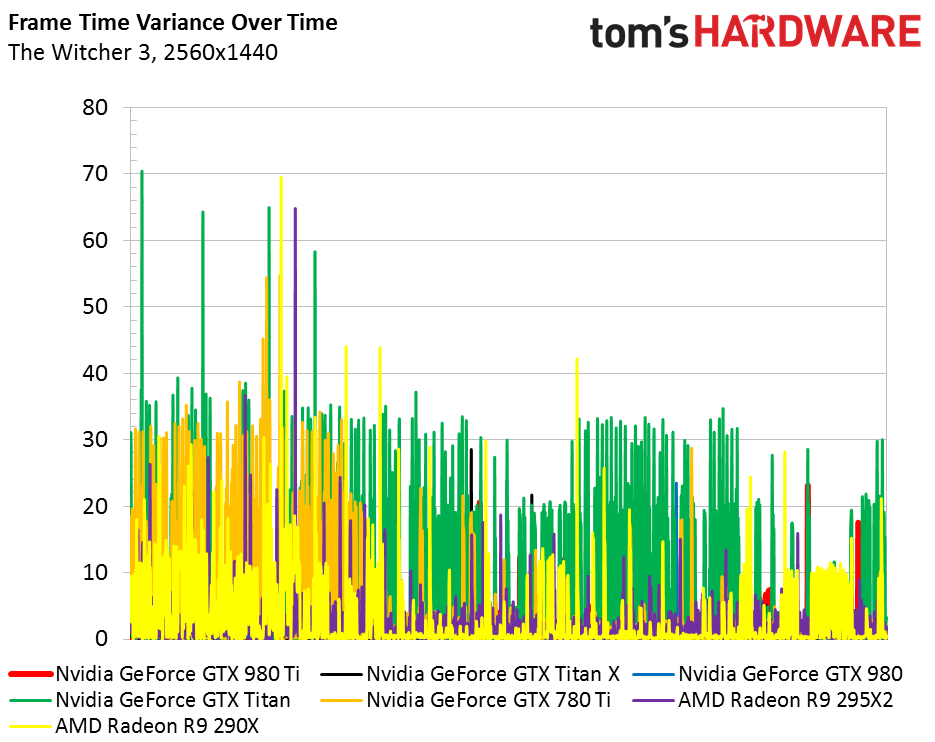
As expected, the GeForce GTX 980 Ti and Titan X appear close together in our charts. Game play at 2560x1440 feels smooth; at 3840x2160 it’s not as responsive, in spite of frame rates that remain above 30. You might want to consider a less-demanding preset to improve performance.
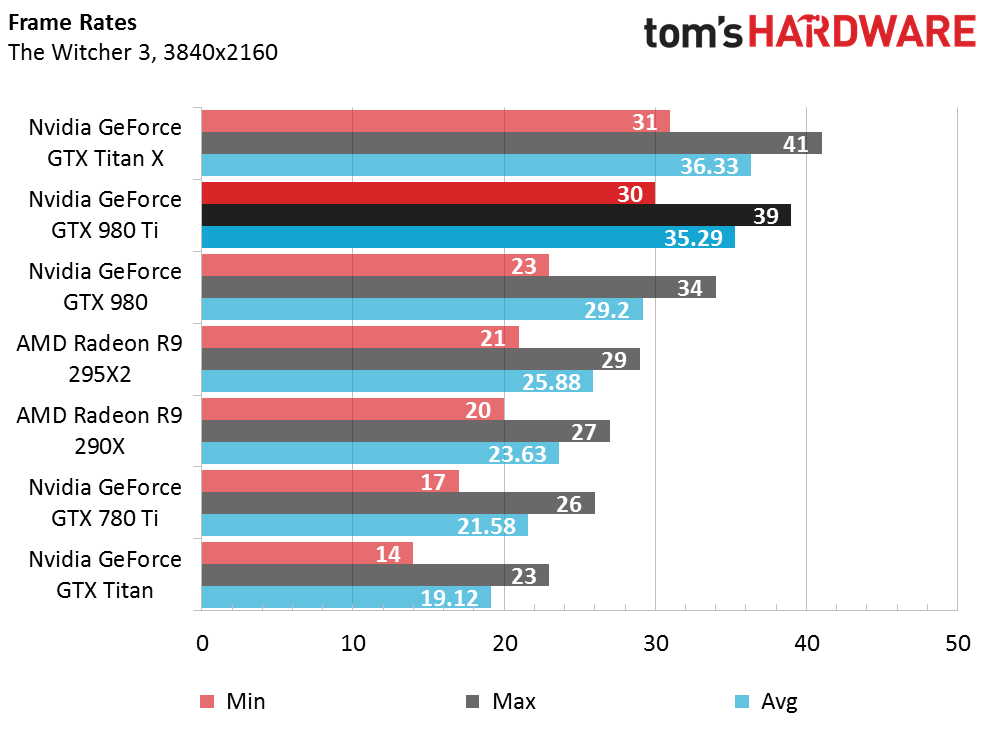
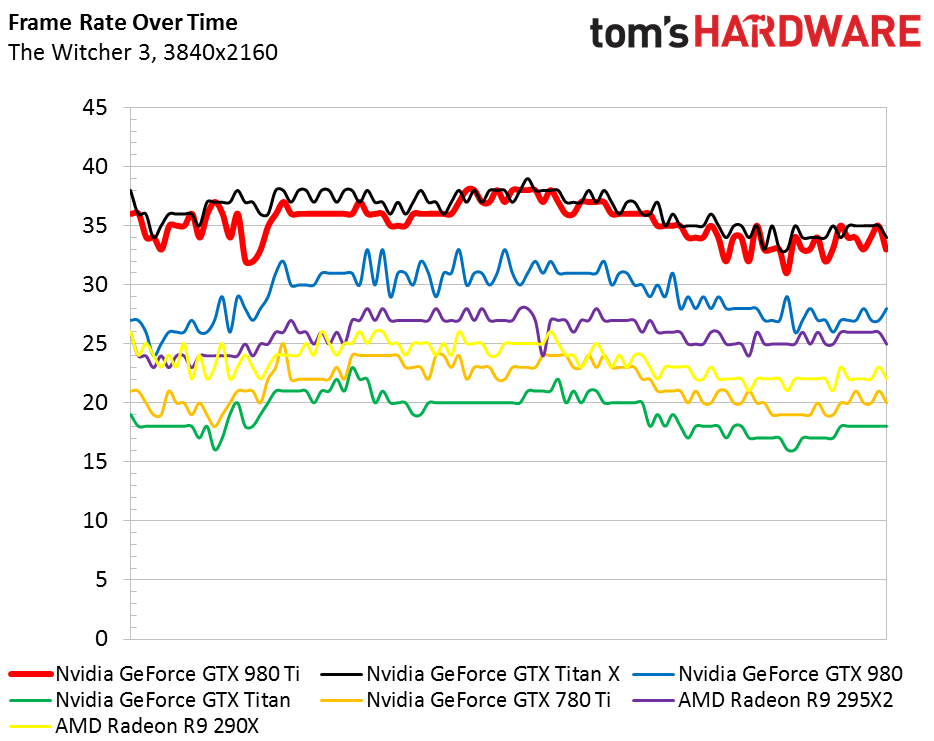
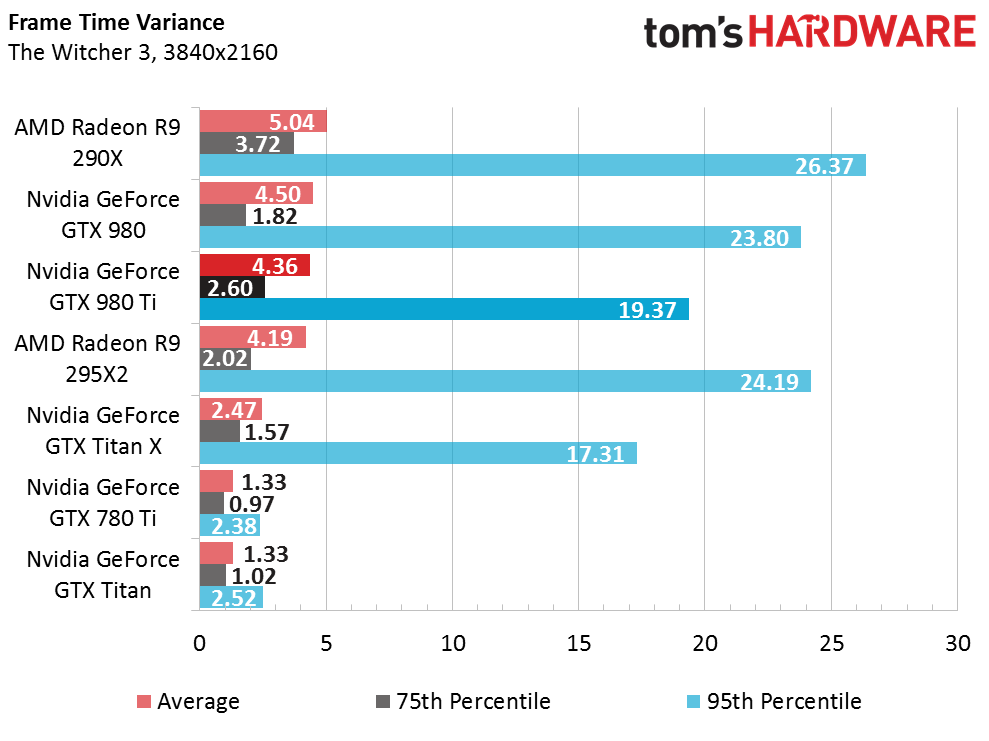
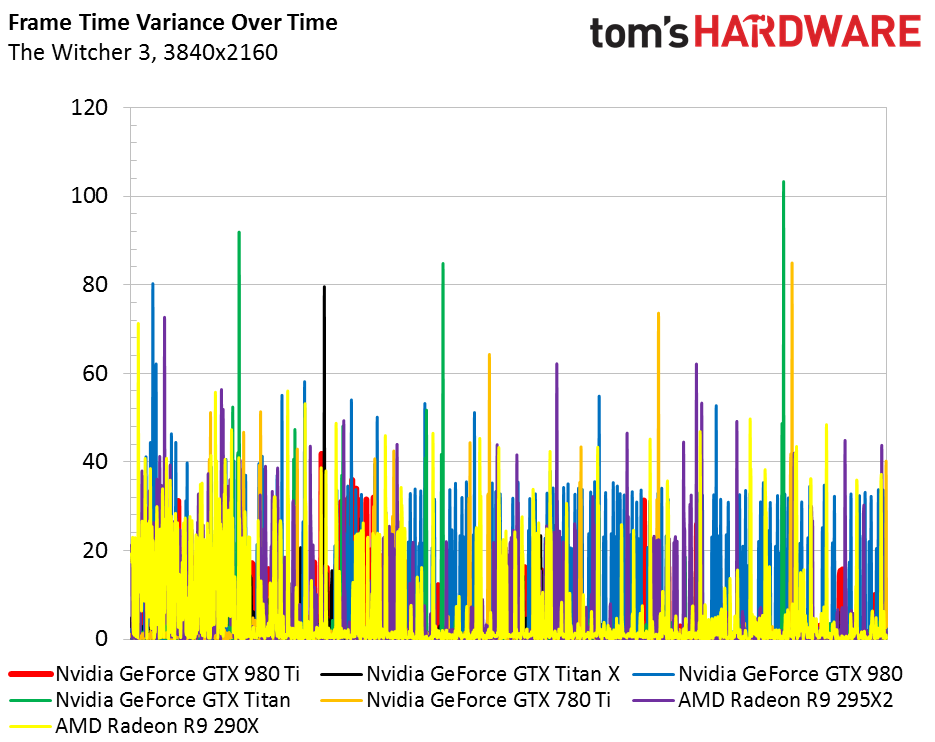
Missing from its top position is AMD’s Radeon R9 295X2. The company did introduce Catalyst 15.5 Beta to address some of its issues in The Witcher 3. However, the driver doesn't help performance with a single Radeon R9 290X. It does benefit the R9 295X2 somewhat. But the scores we recorded were still below its single-GPU card. As such, we'll leave our benchmark numbers under Catalyst 15.4 in the charts as we wait for a technical explanation from AMD.
Get Tom's Hardware's best news and in-depth reviews, straight to your inbox.
Not that a Radeon R9 290X is all that bad. The card offers a good experience at 2560x1440, besting the GeForce GTX 780 Ti and original Titan.
Current page: Metro: Last Light, Middle-Earth And The Witcher 3
Prev Page Battlefield 4, Far Cry 4 And Grand Theft Auto V Next Page Thief And Tomb Raider-
Larry Litmanen How important is gaming to you if you spend $500 on GPU and $500 on a monitor?Reply
I guess i am the only one paying for rent out there. -
alidan ReplyHow important is gaming to you if you spend $500 on GPU and $500 on a monitor?
I guess i am the only one paying for rent out there.
i personally find 4k at sub 48 inch stupid... but than again, i had 800x600 monitors at 15 inches and played some games at 640x480 on 17 inch screens, i also played ps1 games, so once hd came around and was single gpu at 1080p i had no issues whatsoever with jaggies any more.
im not paying 500+$ for AA
im also not sacrificing that much processing power for AA
hell im 1920x1200 at 24 inch... i dont use aa.
granted, a monitor could last you 5+ years if you get a good one so you can see it as an investment, and a gpu, im learning more and more if you sell your high end gpu the moment a new high end gpu comes out, you can get a sizeable upgrade every year for under 100$ and you over all come out ahead.
sorry im tired as hell, i just realized i dont know which way to meant your comment to be taken. -
Shankovich I'm writing this as seriously as I can, not being a fanboy: What is the purpose of the Titan X at this point? It lost its DP performance that made it a fantastic workstation-gaming hybrid. Also, it really sucks for people who bought a Titan X just a little over a month ago? That's ~$350 down the drain pretty much. Yea the Titan X has all that extra VRAM, but for what? 3 4K displays maybe, at which point a 980ti SLI would probably lose by about ~5% due to a few less CUDA cores.Reply
Again though, for most customers, the 980ti is the obvious choice. I just feel like nVidia totally screwed over most of their Titan X customers now. And why? Well, I really think the 980ti will be the cheaper answer to AMD's Fury or whatever Fiji will be called, Really interested to see how it will do. If Fiji beats the Titan X/980ti, it's rumored $800 price point would make the 980ti a somewhat compelling offer depending on how well it does.
In the end, I'm loving this competition! -
wedouglas ReplyHow important is gaming to you if you spend $500 on GPU and $500 on a monitor?
I guess i am the only one paying for rent out there.How important is gaming to you if you spend $500 on GPU and $500 on a monitor?
I guess i am the only one paying for rent out there.How important is gaming to you if you spend $500 on GPU and $500 on a monitor?
I guess i am the only one paying for rent out there.
If you don't have $1000 of discretionary income each year, you need a better job. Better question would be, what adult doesn't have $1000 for a graphics card and a monitor? -
Eggz SOOOOO glad you're finally including the 780 ti in the graphs again! There were a lot of people with this card, and excluding it from the Tom's graphs made things harder to assess. Thanks!Reply -
damric This GTX 980 Ti seems significantly better price/performance than the GTX 980. I will be recommending these for higher end builds.Reply -
photonboy My first considered card since my GTX680 2GB. My only complaint is:Reply
NVidia only reference model? (sigh)
I get the reasons. Minimal competition plus overclocking with better cooler beats Titan X hands down (for gaming). Plus, maybe we'll see non-reference later.
FYI, the EVGA 980 Hybrid got 1600MHz on GPU. That's a fan on main card for VRM's etc and Liquid cooler loop just for GPU with 12cm rad/fan. Even if it "only" got 1300MHz for 980Ti that's still a 30% boost over stock 1000MHz but maybe 1500MHz is actually possible?
So.. I'll wait a bit longer thanks. -
turkey3_scratch This really seems like a great card! Those frame charts show fantastic improvements over the 980. I was expecting more of a middle-ground between the Titan X and the 980 but it practically matched the Titan X's performance spot-on! All for $375 less.Reply
